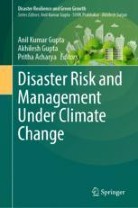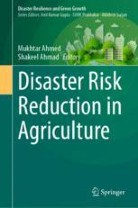
About this book series
Over the years, the relationship between environment and disasters has received significant attention. This is largely due to the emerging recognition that environmental changes - climate change, land-use and natural resource degradation make communities more vulnerable to disaster impacts. There is a need to break this nexus through environment based and sustainability inclusive interventions. Science – technology and economic measures for disaster risk management, hence, need to adapt more integrated approaches for infrastructure and social resilience. Environmental and anthropogenic factors are key contributors to hazard, risk, and vulnerability and, therefore, should be an important part of determining risk-management solutions.
Green growth approaches have been developed by emphasizing sustainability inclusion and utilizing the benefits of science-technology interventions along policy-practice linkages with circular economy and resource efficiency. Such approaches recognize the perils of traditional material-oriented economy growth models that tend to exploit natural resources, contribute to climate change, and exacerbate disaster vulnerabilities, Green growth integrated approaches are rapidly becoming as preferred investment avenue for mitigating climate change and disaster risks and for enhancing resilience. This includes ecosystem-based and nature-based solutions with potential to contribute to the resilience of infrastructure, urban, rural and peri-urban systems, livelihoods, water, and health. They can lead to food security and can further promote people-centric approaches.
Some of the synergistic outcomes of green growth approaches include disaster risk reduction, climate change mitigation and adaptation, resilient livelihoods, cities, businesses and industry. The disaster risk reduction and resilience outcome of green growth approaches deserve special attention, both for the academic and policy communities. Scholars and professionals across the domains of DRR, CCA, and green growth are in need of publications that fulfill their knowledge needs concerning the disaster resilience outcomes of green growth approaches. Keeping the above background in view, the book series offers comprehensive coverage combining the domains of environment, natural resources, engineering, management and policy studies for addressing disaster risk and resilience in the green growth context in an integrated and holistic manner. The book series covers a range of themes that highlight the synergistic outcomes of green growth approaches.
The book series aims to bring out the latest research, approaches, and perspectives for disaster risk reduction along with highlighting the outcomes of green growth approaches and including Science-technology-research-policy-practice interface, from both developed and developing parts of the world under one umbrella. The series aims to involve renowned experts and academicians as volume-editors and authors from all the regions of the world. It is curated and developed by authoritative institutions and experts to serve global readership on this theme.
- Electronic ISSN
- 2662-4893
- Print ISSN
- 2662-4885
- Series Editor
-
- Anil Kumar Gupta,
- SVRK Prabhakar,
- Akhilesh Surjan
Book titles in this series
-

-
The Urban Rehabilitation of Post-Disaster Scapes
- Authors:
-
- Nerma Omićević
- Bojana Bojanić Obad Šćitaroci
- Copyright: 2023
Available Renditions
- Hard cover
- Soft cover
- eBook

-
Disaster Risk and Management Under Climate Change
- Editors:
-
- Anil Kumar Gupta
- Akhilesh Gupta
- Pritha Acharya
- Copyright: 2024
Available Renditions
- Hard cover
- eBook

-
River Dynamics and Flood Hazards
Studies on Risk and Mitigation
- Editors:
-
- Manish Pandey
- Hazi Azamathulla
- Jaan H. Pu
- Copyright: 2023
Available Renditions
- Hard cover
- Soft cover
- eBook

-
Disaster Risk Reduction in Agriculture
- Editors:
-
- Mukhtar Ahmed
- Shakeel Ahmad
- Copyright: 2023
Available Renditions
- Hard cover
- eBook

